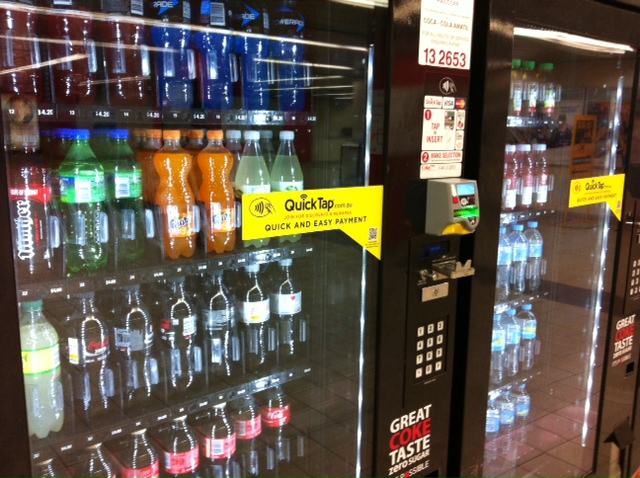Wired Magazine’s Klint Finlay speculates why Coca-Cole would want sixteen million MAC address for their vending machines.
That Coca-Cola has connected all their vending machines shouldn’t come as a surprise, probably the only thing moderately unusual from this story is that the soft drink company organises its own hardware rather than getting the machine manufacturers to do it.
Vending machines being connected isn’t new, back in the days of dial up modems some of the more advanced one would use phone lines for basic diagnostics.
Today most vending machines have a cellular connection used for payments, stock monitoring, fault warnings and vandalism detection.
A visit to my local swimming pool today showed this, the Coca-Cola branded machine machine outside the change rooms offers credit payments and in the not too distant future will probably include some sort of NFC type option.

On top of the the machine is a little aerial for the back to base communications. So the device can validate and bill cards, report back when stock levels are low and alert operators to anything untowards happening.

A big opportunity for the soft drink companies and their distributors is analysing the information about buying patterns at various locations — it’s a classic Big Data play.
So it’s not surprising Coca-Cola has registered a block of MAC addresses as the company will probably need several more 16 million blocks in the not too distant future as more of their operations from bottling plants to vending machines require unique connections.
Vending machines are a small but obvious example of how the internet of things is evolving, in the near future most consumer devices will have similar options.




